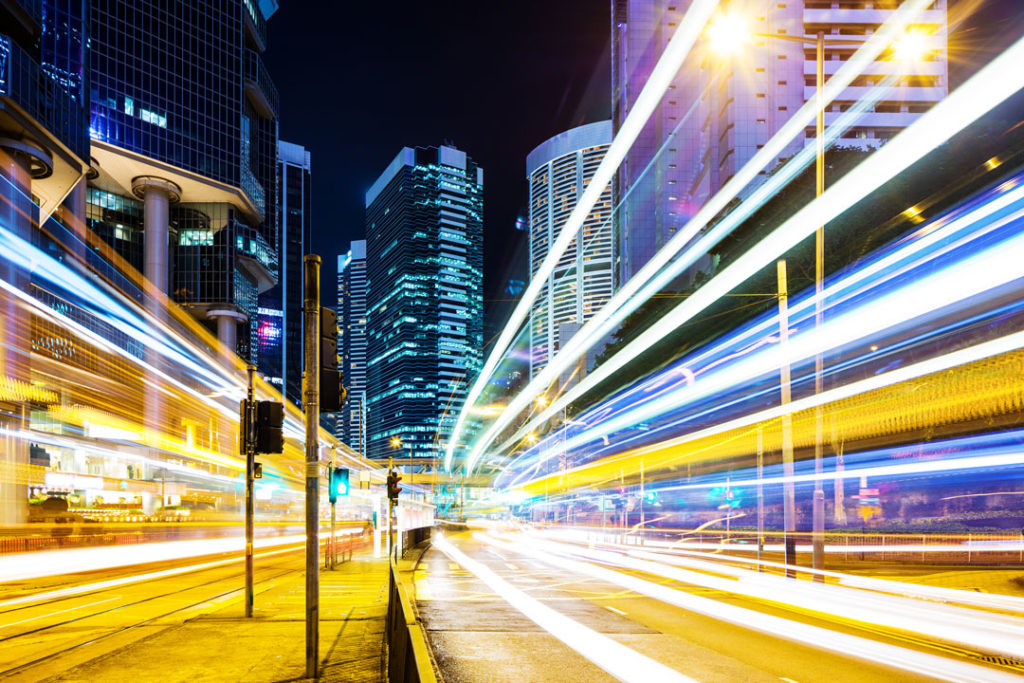As Google Founder, Larry Page, once said when considering why so many companies failed over time, “it’s usually just that they missed the future.” When you are focused on the present, on maintaining your business of today, it’s easy to miss the opportunities the future presents. For this reason, it’s fundamentally important that business leaders take time out from the business of today to imagine the business of tomorrow. And the only way to do that is to understand the forces shaping that future. We’ve put together a list of five global mega-forces shaping the future.
1. Going, going, gone… Green

The climate crisis has been on the global agenda for decades. The Paris Climate Accord was signed at COP21, some seven years ago. Since then, little has really changed. We continue to be heavily reliant on fossil fuels to meet our ever-growing energy needs, with more than 80% of the world’s energy coming from fossil fuels (and in the light of the current energy crisis, many developed economies are looking back to fossil fuels to meet the expected shortfall).
In a recent address, UN Secretary General Antonio Guterres warned that ‘half of humanity is in the danger zone’ as nations across the globe faced unprecedented weather patterns leading to natural disasters on a scale not yet seen. He went on to state that humanity faces a ‘collective suicide’ if we don’t urgently address the climate crisis. When we consider 2022 alone, we have seen multiple high magnitude earthquakes; rampant wildfires across the US, Europe, and Australia – further degrading the ozone layer; severe flooding across several continents, numerous European countries recording their highest temperatures; and an Atlantic hurricane season that has already racked up a bill of almost US $30bn.
‘Going Green’ is a critical driving force for our future, but we are not moving fast enough. In the face of natural disasters that are increasing in scale, frequency, and ferocity, we must do more to create, not only sustainable, but regenerative businesses. Businesses that work to reverse the effects of climate change, plastic pollution, and environmental destruction, not just halt global warming.
2. Urbanization – the growth of ‘Megacities’

The move to urban areas is an unstoppable force – already more than half the world’s population lives in cities, compared to around 3% in 1800. Today, there are more than 32 ‘megacities’, each housing more than 10-million people. By 2030, we expect that number to grow to 45, with 33 of them in Asia.
Throughout history, cities have been centres for culture, learning, and economics and have attracted people in their droves. As the global population grew, so too did the cities, with the developed world seeing mass migrations to cities across Europe and North America starting around the Industrial Revolution.
In the future, we will see this pattern repeat itself, this time in Asia and Africa. In addition to Lagos and Kinshasa (both with a population of over 15m), Africa has another two cities bubbling under the ‘megacity’ title – Luanda in Angola (population 9m) and Dar es Salaam in Tanzania (population 7.4m), and those populations are expected to grow to 12.1m and 10.8m respectively by 2030.
The biggest urbanisation boom is expected in Asia, with 5 of the 9 projected megacities located there. Hyderabad, in India, is the world’s newest megacity, reaching the 10m population mark in 2020. Although not yet categorised as a megacity, the Vietnamese capital, Ho Chi Minh City is the fastest-growing Asian city. Expected to reach 11m inhabitants by 2030, it already accounted for almost a quarter of Vietnam’s gross domestic product (GDP) in 2019. Chengdu, in Southwest China, is well-positioned to reach megacity status. Over half of the world’s largest companies currently have operations based in the city and its population is set to grow by almost 13% by 2030.
3. Economic shifts – the money is moving

Economic might is moving steadily from the Western economies to the East. According to the World Economic Forum, China was expected to overtake the US as the most powerful economy, possibly as soon as 2030. More recently, analysts say Covid restrictions and Xi Jinping’s tighter control could delay China’s rise to top economy until 2060, if at all.
But this shift will be felt by other nations as well. India’s rapidly growing economy is set to displace Japan as the third largest global economy in the early 2030s, which would push Germany down to fourth.
In 2020, the European economy accounted for almost 20% of the output of the top 10 economies.This figure is set to drop to 12% by 2035. Western economies are on the backfoot and growth is happening in Asia and the emerging economies.
4. Smart technologies

Technology remains the single greatest driver of change, spurred by connectivity. With massive advances in AI, robotics, biotech in healthcare, smart manufacturing and logistics, and quantum computing, the disruptive impact of this mega-force will only increase as we enter the 2030s.
As we continue to strive for ‘net-zero’, energy conservation is key. Smart technologies enable significant energy savings through connected homes and automation – to say nothing of the convenience factor.
Similarly, smart home security systems are more effective at preventing intrusions, compared to manual systems, and can warn homeowners and alert authorities of potential threats. Smart technologies also have innumerable applications in the healthcare field – from early warning systems for epileptics to medication monitoring.
5. The human impact

In the 1950s there were just 2.5bn people on the planet. In 70 years, that number has more than tripled, swelling to over 8bn in 2022. Alongside that growth, the human population is aging. The number of children born in 2018 is just under 50% more than the number of children born in 1950. Child and infant mortality rates also fell significantly over this period. But predictions for the coming decades do not follow this trend –birth rates are expected to drop rather than increase, especially in the developed world.
This, coupled with reduced overall mortality rates, increased longevity, and advances in healthcare and medicine, will result in a generally older population. According to data from the UN Population Division, in 1950 for every child younger than 15 years old, there were 1.7 people of working age, in 2018 that ratio had grown to 1:2.6.
But in emerging countries, particularly in Africa, populations are growing.
This gives rise to many pressing social questions, linked to urbanization. What does this mean for health care, education, social funding, care for the elderly, and for global migration and national cultures? These are issues that are going to impact every country, and by extension, every business and organization in those countries.
How will YOU respond? That’s what Strategy from the Future™ is all about.
To find out more about Futureworld’s proprietary approach, Strategy from the Future™, visit our Approach page, or get in touch with us.
About the Author

Neil is a life-long communicator with a passion for the future. He’s a powerful and engaging presenter and facilitator who delivers multimedia keynotes and strategic breakthrough workshops on the waves of change shaping the future of business and society.
He’s a founding member of the Futureworld network and works around the world with senior executive teams from major companies and governments, helping them understand the challenges they face in a radically changing marketplace.
- Articles